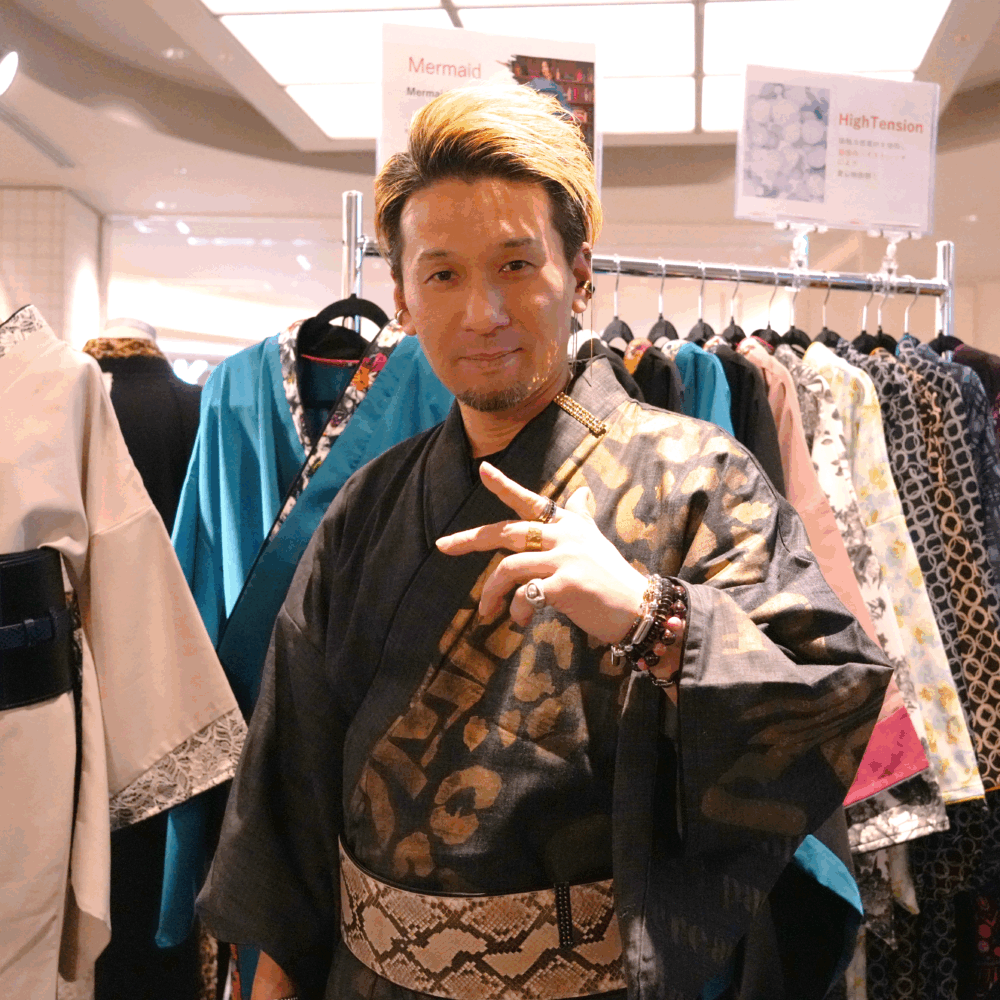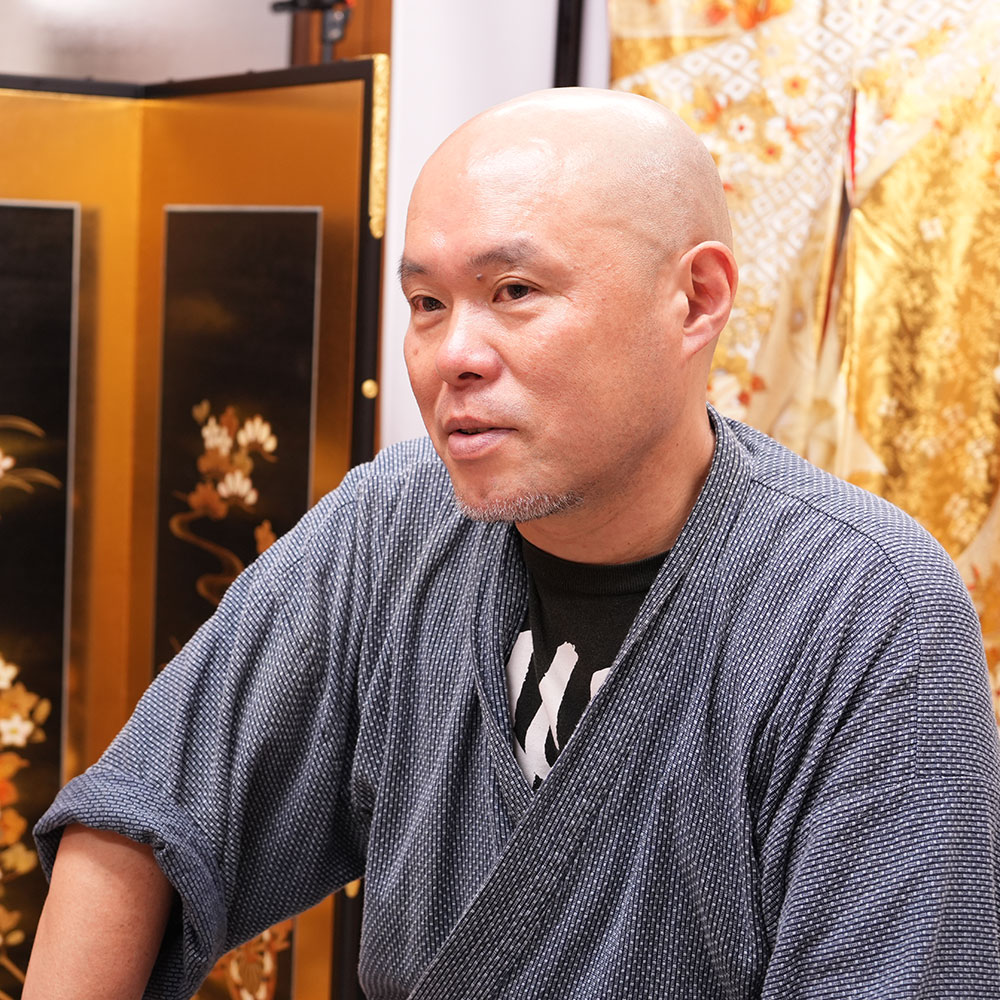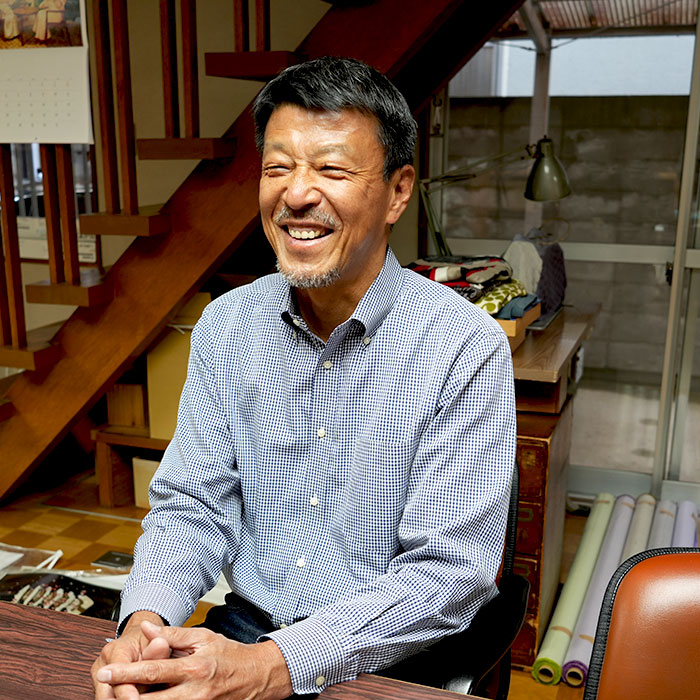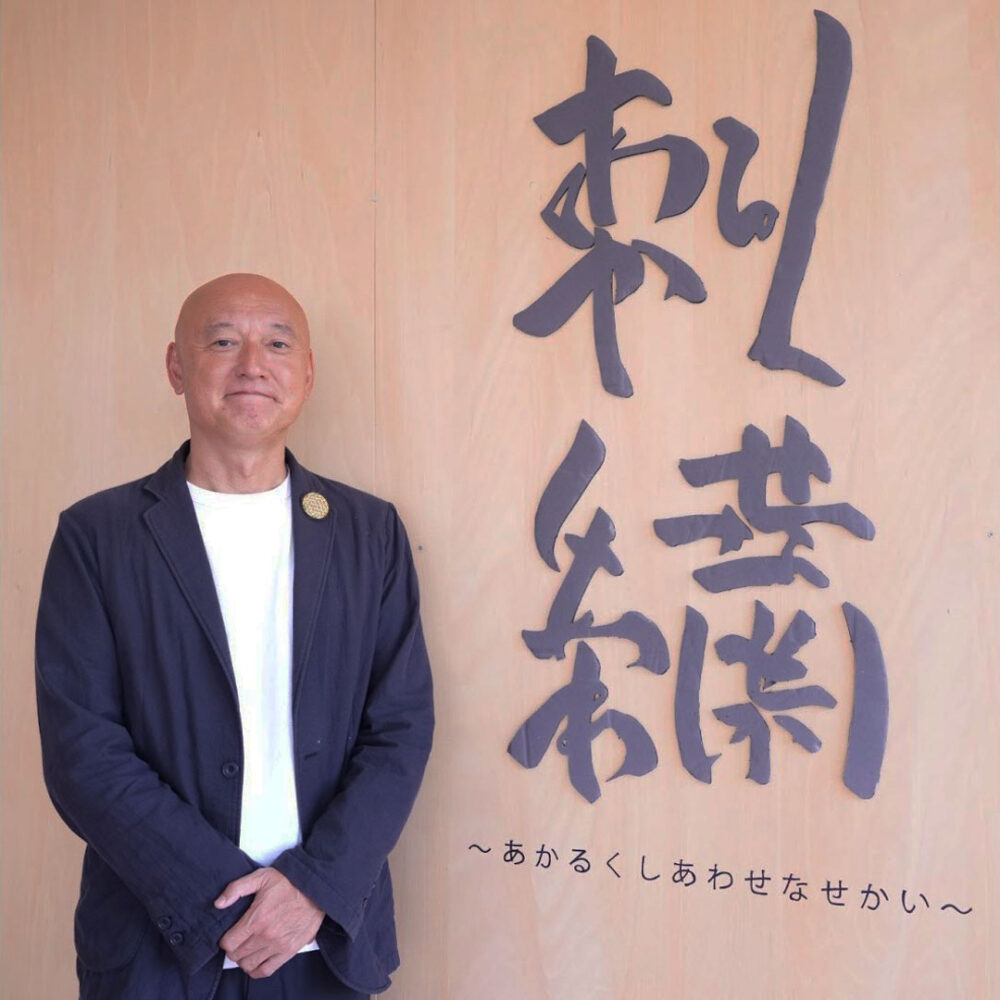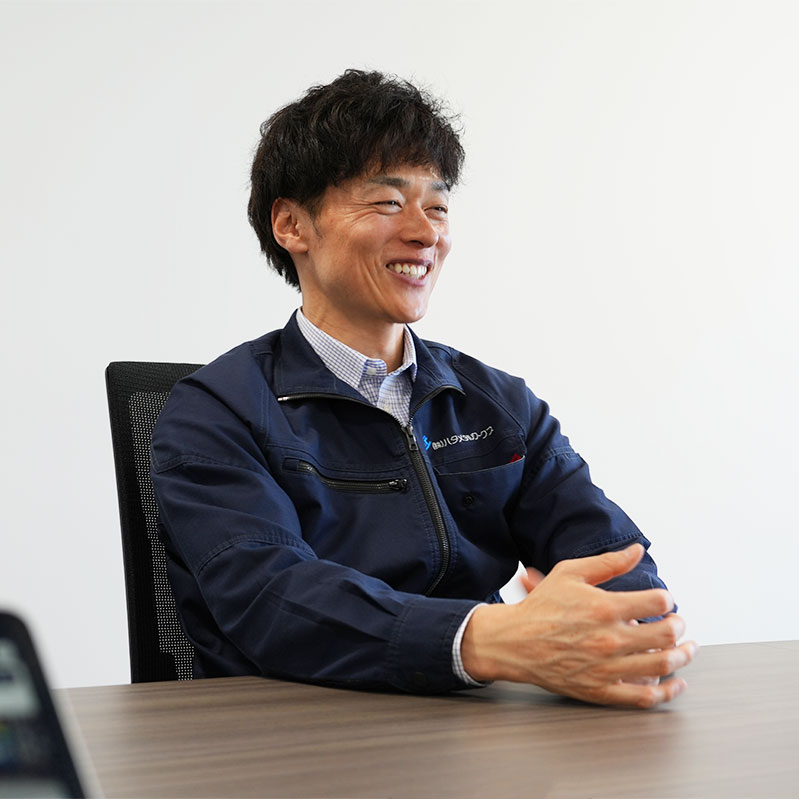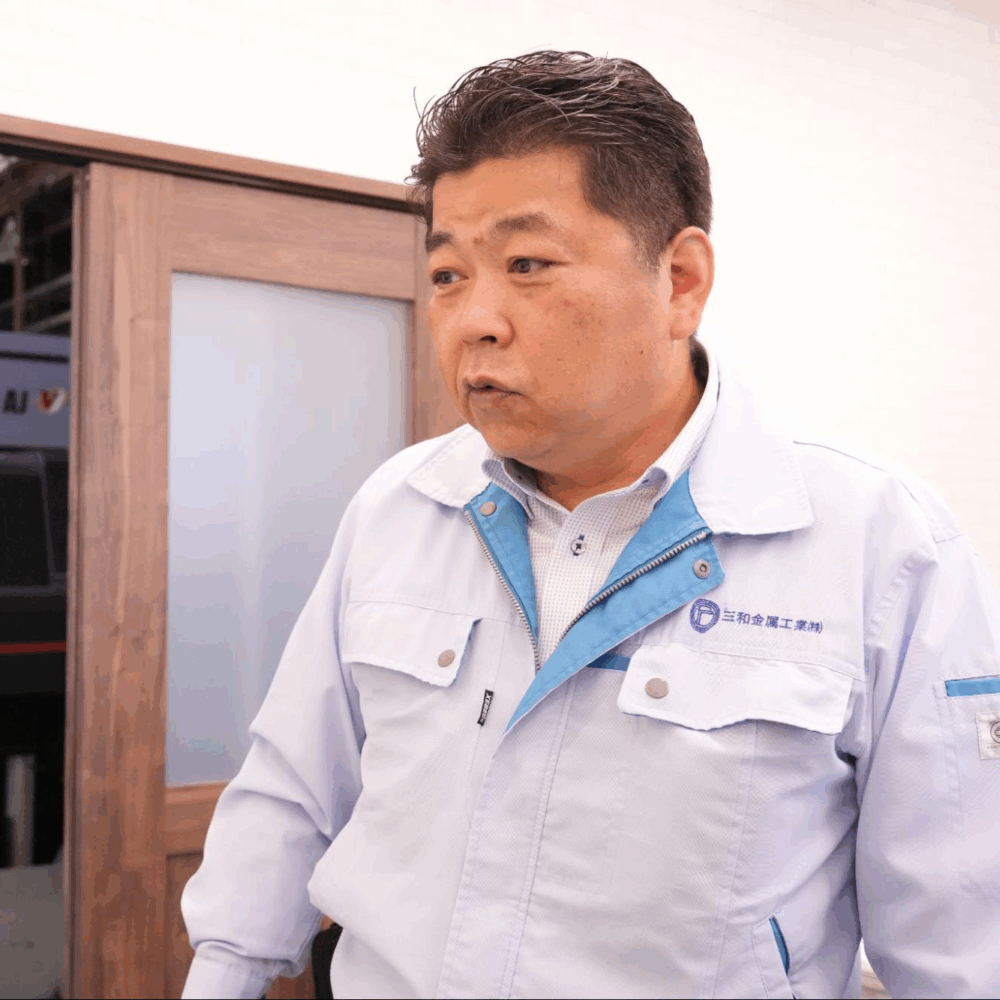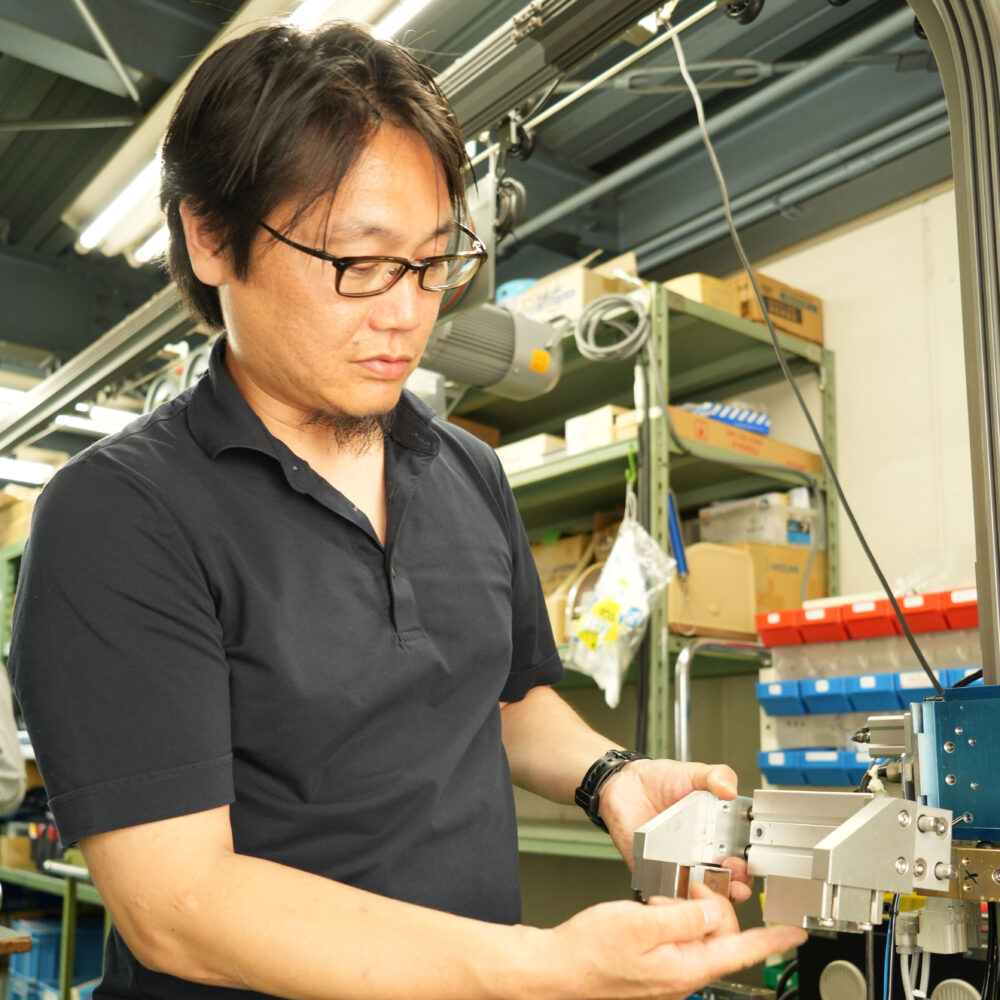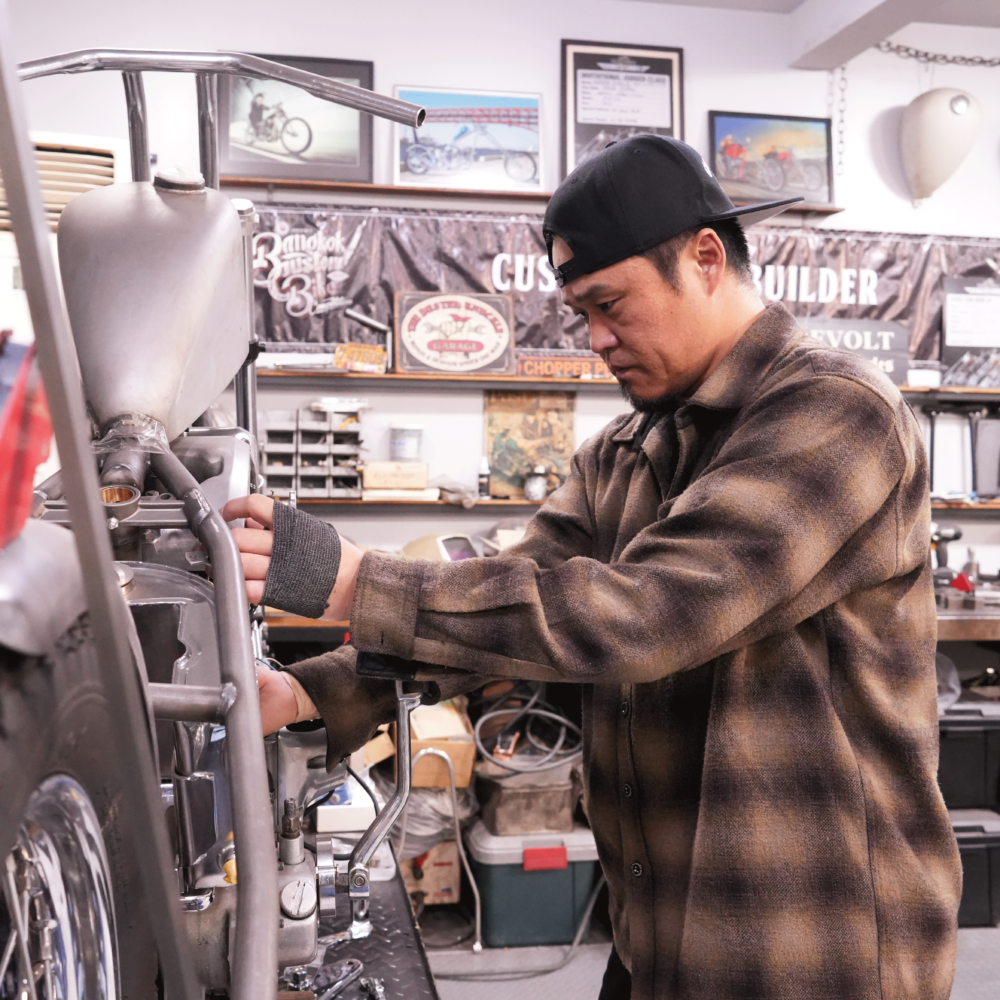Short Lead Times and Small Lot Production: A Leader in Sports Apparel OEM
- Textile industry
- Connecting with People
- Consider Diversity
- successor
Osaka
SANVI co.,ltd is a company engaged in contract manufacturing of sports apparel. Approximately 80% of its sales come from OEM (manufacturing products for other brands) for major sports manufacturers such as Asics, Mizuno, and Descente. Its unique production system, which enables short lead times and small lot production to meet customer demands, is a distinctive feature and strength. In this article, we spoke with the company's President, Tagami Haruhisa, and his eldest son, Tagami Yuya.

PROTAGONIST
Tagami HaruhisaPresident
Short lead times and small lot production are SANVI’s strengths
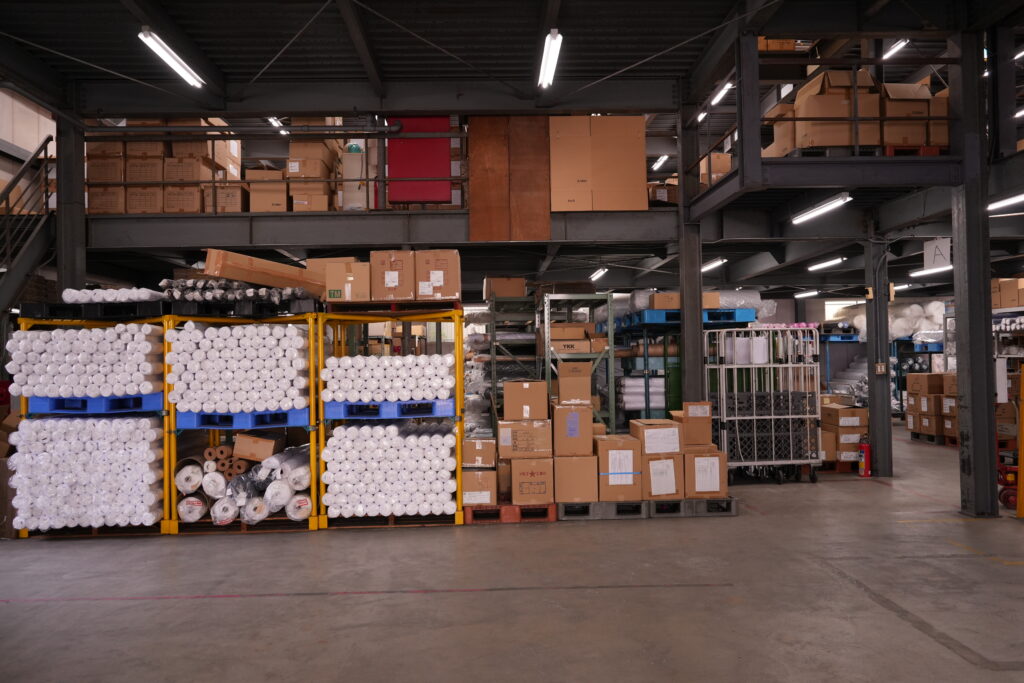
SANVI undertakes contract manufacturing for major sports manufacturers and, in addition to producing based on specifications, occasionally proposes concepts to the manufacturers. The company is committed to sustainable production practices, such as using recycled fabrics and eco-friendly water-repellent agents, aligning with the SDGs and emphasizing environmental conservation. SANVI also operates two wholly-owned factories in China, which enable short lead times and small lot production—one of its key strengths.
“In OEM production, the typical process involves dyeing the fabric after the order is placed, followed by sewing after two or three months. We, however, keep an inventory of fabrics in certain materials and colors, allowing us to produce even with short lead times. In sports orders, team-based requests are common, and if, for instance, the L size runs out of stock, it prevents the sale of M and S sizes as well. Being able to quickly produce just the L size helps prevent opportunity loss for the manufacturer. This adaptability fits well with the unique demands of the sports industry. Having a wholly-owned factory in China, close to Japan, allows us to respond with short lead times, making us a valuable partner to our clients,” explained President Tagami.
The impetus behind establishing the wholly-owned factories in China.
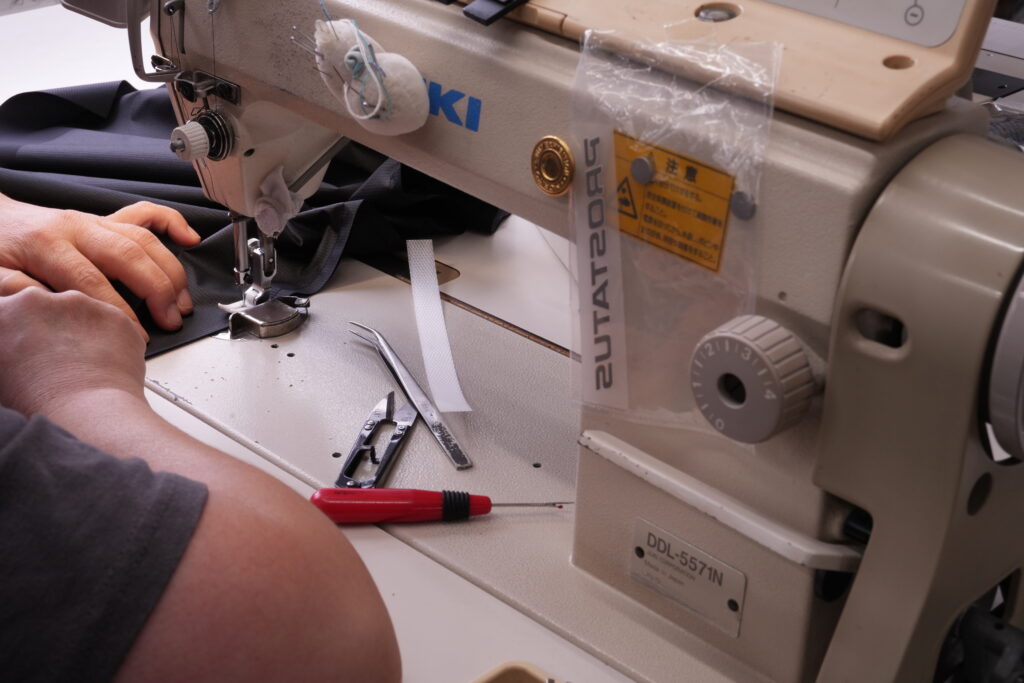
The decision to establish wholly-owned factories in China was sparked by the news in 2002 that China would be joining the WTO (World Trade Organization). The concern was that once China joined the WTO and began receiving orders from the U.S. and Europe, SANVI might lose the capacity to produce its own products. By setting up wholly-owned factories, the company was able to secure a system capable of stable, short lead-time, and small lot production, meeting the demands of major manufacturers. To meet the high quality standards required by large clients, SANVI has implemented stringent quality control measures.
“SANVI has a disproportionately large production technology department for a company of its size. Since major clients are very strict about quality, we have significantly increased the number of people involved in production management to respond accordingly. Our factory is ISO 9001 certified and passes the annual audit every year,” explained President Tagami.
ISO 9001 is an international standard for quality management systems established by the International Organization for Standardization (ISO). Being ISO 9001 certified signifies that a company values and upholds a balance of QCD (Quality, Cost, and Delivery) in customer interactions.
It all began with vinyl products processed using high-frequency technology.
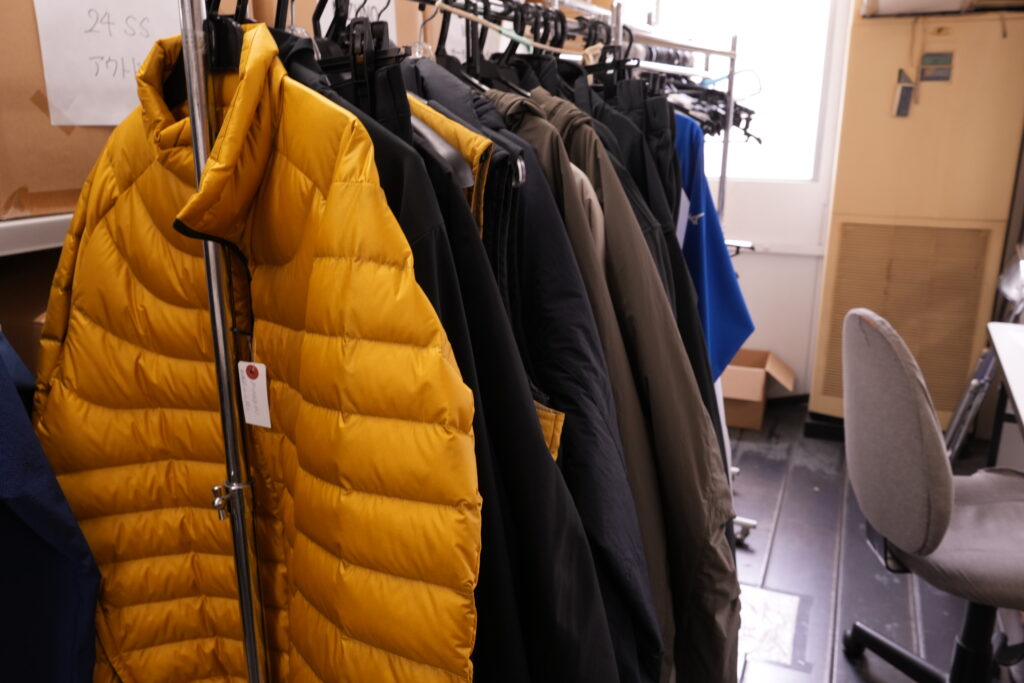
SANVI co.,ltd was founded in 1952 by Tagami Saburo, the father of the current president, Tagami Haruhisa, after he left his previous job. He started with high-frequency processing of vinyl, a technique that was not common in Japan at the time. High-frequency processing refers to a method used to create vinyl products, such as tablecloths and vinyl wraps. It was reportedly the second instance of this technology being introduced in the Kansai region, following Kanebo. The founder’s interest in the technique began when he read American literature as a student and sought out manufacturers to bring it to Japan. This led to the development of the world’s first high-frequency processed poncho.
“My father loved mountain climbing. At that time, nylon ponchos were used, but they were quite heavy. He wondered if a lightweight, affordable poncho could be made from vinyl, which led to the independent development of the vinyl poncho. Selling these to sports retailers laid the foundation for SANVI as it is today. The company also established itself by making ski over-pants and developing exclusive fabrics with the Mitsubishi Group, contributing to our base through the pursuit of new technologies,” explained President Tagami.
However, by the time President Tagami joined the company around 1988, OEM production for sports manufacturers already accounted for a significant portion of the sales. Around 1990, there was increasing criticism of vinyl products, leading to a gradual reduction in the vinyl business. From around 1995, when President Tagami took office, OEM production in China began. Although there were still some original products, such as windbreakers and ski wear at that time, their share gradually declined, and today the company is entirely focused on OEM production.
“The major turning point for the company was establishing our 100% wholly-owned factory in Zhejiang Province, China, in 2003. We then built a second factory in Jiangsu Province in 2012 and, in 2013, began collaborating with a factory in Myanmar. Since then, our sales have continued to grow steadily,” said President Tagami.
One may also wonder how SANVI began relationships and secured deals with major sports manufacturers.
“We already had a relationship with Mizuno even before I joined. As for Asics, Descente, and Miki House, we made direct visits, presenting our capabilities by saying, ‘We can make products like this. Please consider placing an order!’ We were fortunate that they adopted our products, and from there, we gradually built trust,” explained President Tagami.
Strong Bonds with Local Chinese Partners: The Key to Success
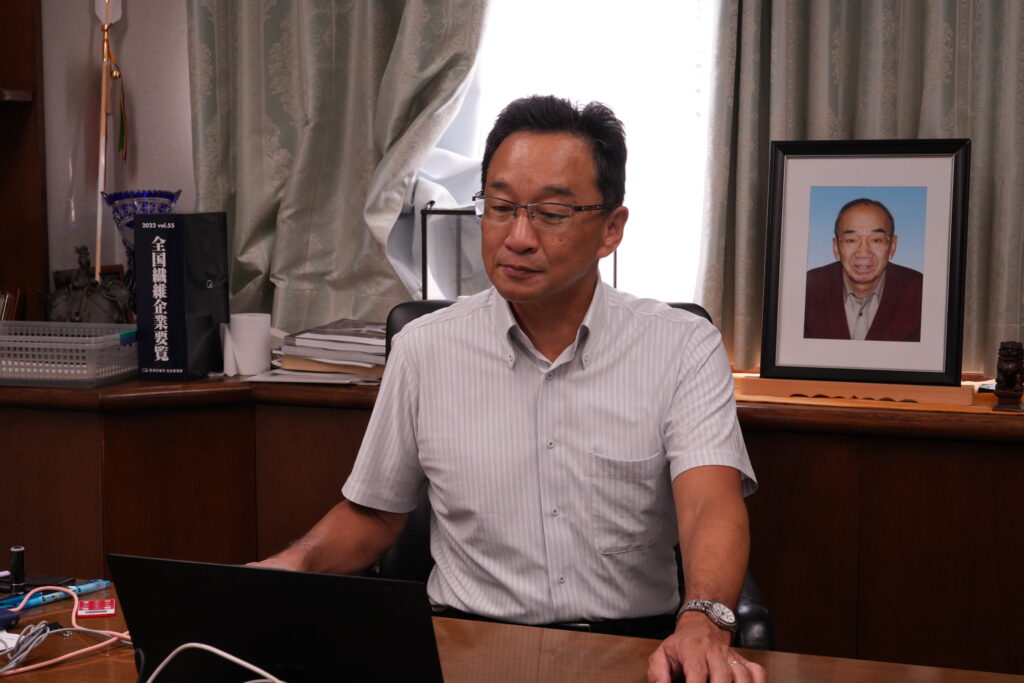
Before joining SANVI, President Tagami worked in the steel industry. Initially, his father had told him, “You don’t have to take over the company.”
“As the eldest son, I always intended to eventually take over the family business, so I practiced leadership in club activities and even took up golf. However, when I was told, ‘You don’t have to take over,’ I decided to find a job after graduating from university. About two and a half years later, out of the blue, my father asked me to take over after all. But transitioning from a steel company to a small-to-medium sports apparel company was a completely different field, right? So, I asked my father to let me train for a while and worked at a retail store specializing in sports goods at another company. After about a year and three months of training there, I joined SANVI,” President Tagami recalled.
After joining SANVI, he found it challenging to build relationships with people. There were times when employees he trusted left unexpectedly. He has long recognized that valuing people and motivating them to work wholeheartedly is a major challenge. Moreover, establishing the factory in China brought significant difficulties.
“There were cultural differences, and we sometimes encountered underlying anti-Japanese sentiment. There were also troubles with the government. There was even a time when I was prepared for my company to go under if the Chinese factory were forced to close. Fortunately, we managed to get by with only a fine. I believe the success of our business in China is largely due to the presence of reliable Chinese executives. One such executive, who helped handle the government issues, has become the head of our Chinese subsidiary, and we have built a strong bond of trust over 27 years. We don’t have any Japanese expatriates there, which I think is quite unusual,” said President Tagami.
Considering a Third Base and Developing Original Products
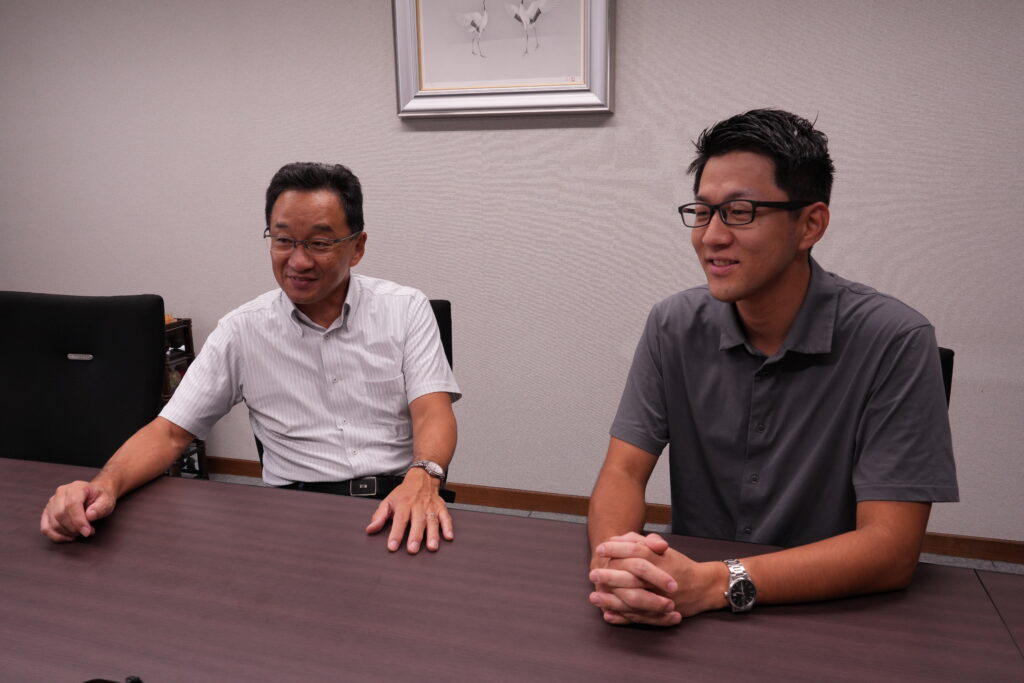
For future developments, they are considering establishing a third base in addition to their existing ones in China and Myanmar.
“I think having one more base while I’m still around could be beneficial. It might even be a collaborative effort between me and the next president. Moving forward, it’s essential to create a sense of unity by involving employees and working as a cohesive team. As long as I’m managing the company, I want it to be a good place to work, where employees feel happy to be part of it,” said President Tagami.
Yuya Tagami, the president’s eldest son, shared his thoughts as well:
“My grandfather, the founder, established SANVI, and my father built the factories in China. I aim to establish a base in a third country, especially in Southeast Asia. And as long as we are engaged in manufacturing, I also want to create original products. Seeing our own ideas brought to life and released to the world boosts the motivation of our employees. While I cherish and carry on what the previous generations have built, I also want to pursue initiatives that only I can undertake,” Yuya said.
Both President Tagami and Yuya have an impressive commitment to valuing “people.”
INFORMATION
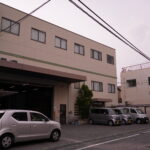
SANVI co.,ltd
Please leave the OEM and ODM of sports apparel products to us, including planning, design, and production.
We also propose production schemes covering design, fabric, materials, printing, embroidery processing, and more.
- Founded in
- 1953/10/23
- No. of employees
- 46
- Website
- https://www.sanvi.jp/
- Writer:
- GOOD JOB STORY 編集部




